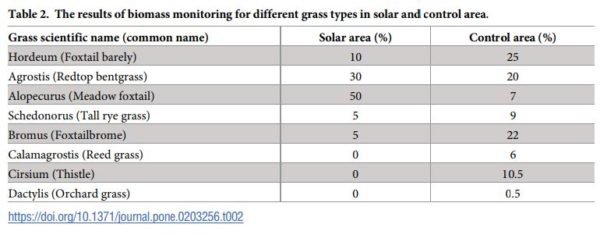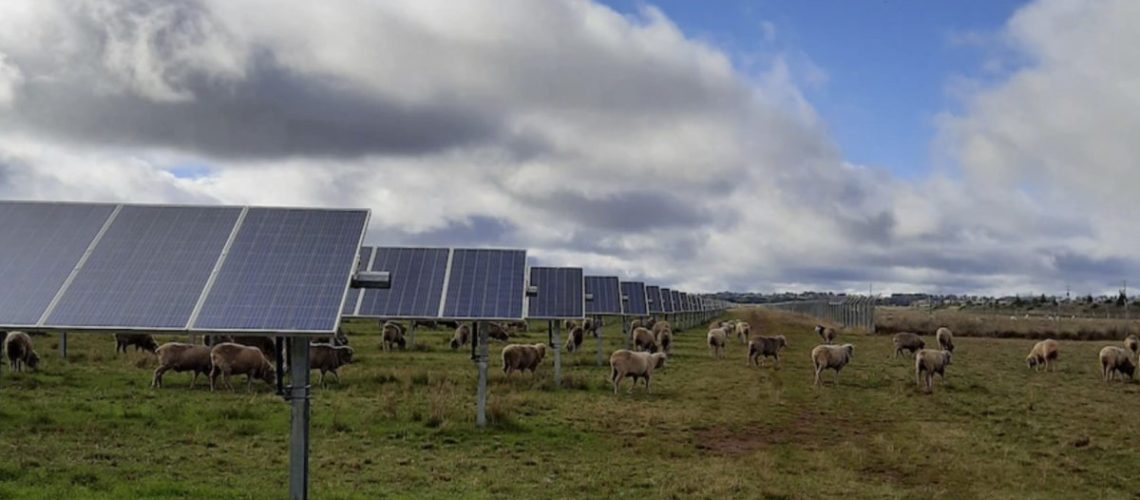Two Australian farmers reported that their solar panels increased grazing quality during drought periods over a four year period, aligning with research suggesting solar panel microclimates might increase water retention, and grass production.
June 1, 2022
Two agrivoltaic installations in New South Wales, Australia are being credited with increasing the quantity and quality of fleece in sheep grazing at the facilities during a drought. Research has indicated that the partial shade offered by solar panels creates a microclimate that reduces evaporation and significantly boosts the production of vegetation in arid climates.
While these results are preliminary and anecdotal (and perhaps a tall tale from a fleece salesman down under), they offer potentially exciting field results that could be applied globally.
Graeme Ostini, a wool broker, says he’s been grazing his merino wethers (a variety of sheep) at a solar farm where sheep can graze under the modules. Ostini and other grazers say that over the past few years, these sheep have been ‘cutting an amazing amount of wool’.
Ostini said, “It is actually quite astonishing. Some of the sheep look fantastic. They’re growing exponentially and the wool cuts are in the top 5% in the district.” Ostini has been grazing sheep at the site for four years now.
At a separate site, a Tom Warren runs about 250 merino ewes and wethers on 54 hectares of land, land that he also leases to a solar developer.
Warren claims that while his wool yields remained the same, the quality of his wool improved significantly due to reduced contamination. The panels did more than provide shade for the sheep and grass: by slowing evaporation, they also prevented dust from contaminating the wool.
Mr. Warren noted that the solar panels condense additional water that drips onto the grasses and provide an additional source of water, increasing the carrying capacity of the land by around 25%. Warren also noted that by leasing his land to the solar farm and grazing his sheep there, his income had increased.
The higher quantities of grass available for grazing were not surprising. Dr. Elnaz Hassapour Adeh, a researcher at Oregon State’s College of Agricultural Sciences, found that several key grazing grasses were able to significantly increase their output mostly due to significantly increased water efficiency – by 328%.

In total, the researchers found that areas that were partially or fully covered by solar panels increased their biomass production by 90%.



